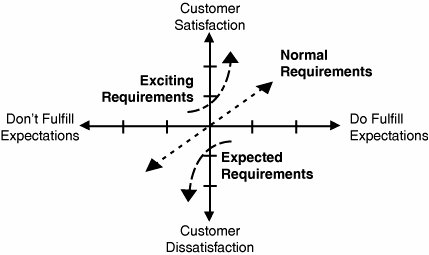Introduction
| QFD is a Quality system [Mizuno and Akao 1994]. The task of QFD in the overall framework of Total Quality Management (TQM) is to ensure customer satisfaction (see Figure 24.1) [Zultner 1993]. In order to achieve, or leverage, customer satisfaction, it is necessary to deliver and explain value to customers. To do this requires that the product/service be designed with value and produced with value. In order to develop such value into the product, we must start by discovering what value is for the customers we are trying to satisfy. We must understand from the customer's point of view what is valuable to them. Figure 24.1. QFD as a quality system. Definition of ValueThere are only four sources of value for customers of software, and software-intensive products and services [Zultner 1996].
Any product, service, or software that does not address at least one of the preceding sources of value is valueless to customers. So how can we find the four sources of value for our own customers? To satisfy customers today (so that they choose our product) and tomorrow (so that they are loyal to us) we must deliver value to them. To do this we must design and produce products and services that meet customer needs better than any other competitor. QFD ensures this during development. Why Not Ask?The most direct way to get answers from customers is to ask them. But they won't be able to tell us all of their requirements. The Kano model (see Figure 24.2) tells us that we are likely to miss whole classes of requirements [Kano et al. 1984]. The basic types of requirements are as follows:
So requirements differ in their effect upon customer satisfaction. And we won't get a complete set of requirements, because customers have no systematic way to sweep through their requirements space and download it to us. Yet we still must satisfy our customers! Unprecedented ProductsIf we cannot rely on customers to tell us all their requirements, even for familiar products, what can we do for unprecedented products? For products that customers have never experienced before? CUSTOMER NEEDS: Solution-independent benefits that customers desire to possess. |
EAN: 2147483647
Pages: 394
